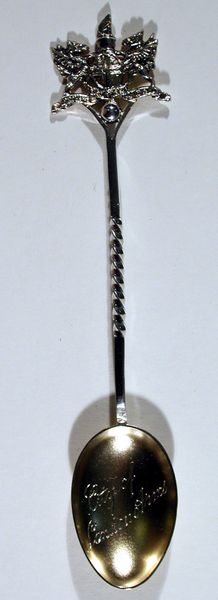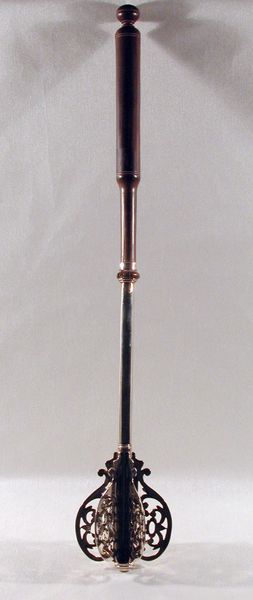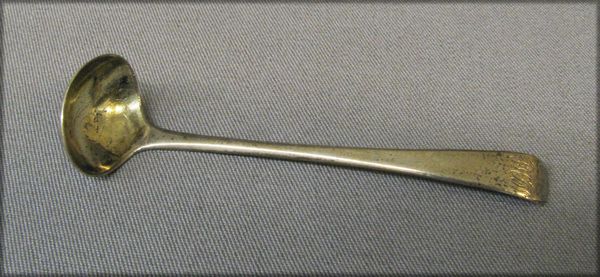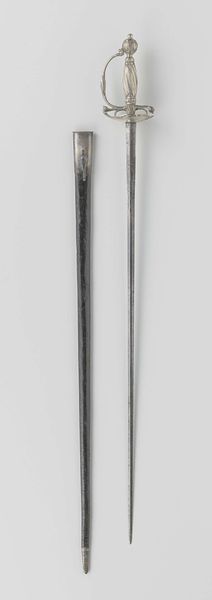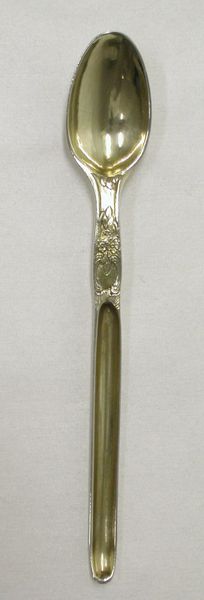
Souvenir spoon with portrait of Queen Victoria and finial in form of Windsor Castle 1897 - 1898
0:00
0:00
silver, metal, sculpture, engraving
#
portrait
#
silver
#
metal
#
sculpture
#
sculpture
#
decorative-art
#
engraving
Dimensions: Length: 4 3/4 in. (12.1 cm)
Copyright: Public Domain
Editor: So, we’re looking at a souvenir spoon made around 1897-98, crafted from silver, depicting Queen Victoria with Windsor Castle as the finial. It’s really intricate, a piece of functional art! What strikes me is how it blends royalty with something so everyday. What's your take on it? Curator: I see this spoon as a fascinating example of late 19th-century material culture. The choice of silver speaks volumes. It's not just a spoon; it's a statement about status and access, manufactured and consumed during Victoria's reign. What sort of labor practices would have been involved to make this relatively mass produced product available to so many middle class tourists? Editor: I hadn’t considered the production side. Was it meant to elevate the everyday, or make royalty more accessible, or just a blatant consumer good? Curator: Perhaps all three intertwined! This object collapses traditional boundaries. Is it craft, art, or simply a commodity? Consider the process: the mining of silver, the engraving of the portrait, the casting of Windsor Castle. Each stage represents a different form of labor. Who benefited, and under what conditions were these objects produced? The materiality belies social relations. Editor: That shifts my perspective entirely. The spoon isn't just a souvenir; it embodies a network of production, consumption and societal status! Curator: Precisely! It also highlights how "high art" and "low craft" distinctions begin to blur with mass-produced commemorative objects. What stories do these materials tell about the prevailing societal dynamics of the Victorian Era? It urges us to investigate who made it, for whom and under which conditions? Editor: This makes me realize how much of history is embedded in everyday objects, even a souvenir spoon. Curator: Exactly. It invites us to think beyond aesthetic appreciation to understand the social and economic networks at play, during production and after acquisition. Editor: Fascinating! I’ll definitely be looking at other decorative art with fresh eyes now, thinking about materials and social contexts. Thanks for the insights.
Comments
No comments
Be the first to comment and join the conversation on the ultimate creative platform.




